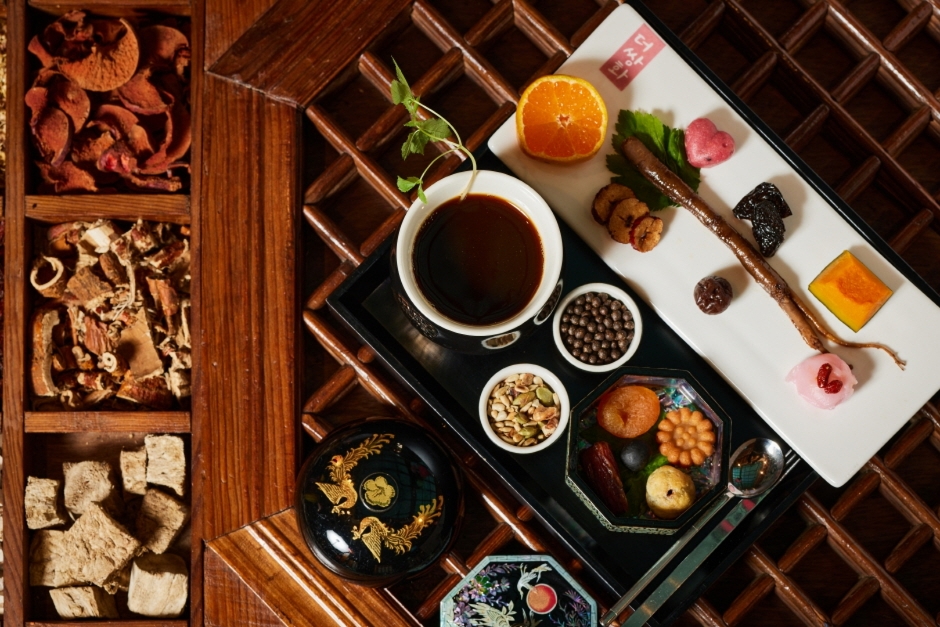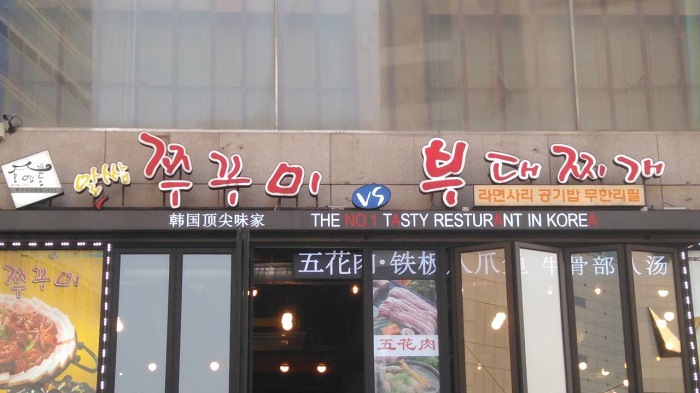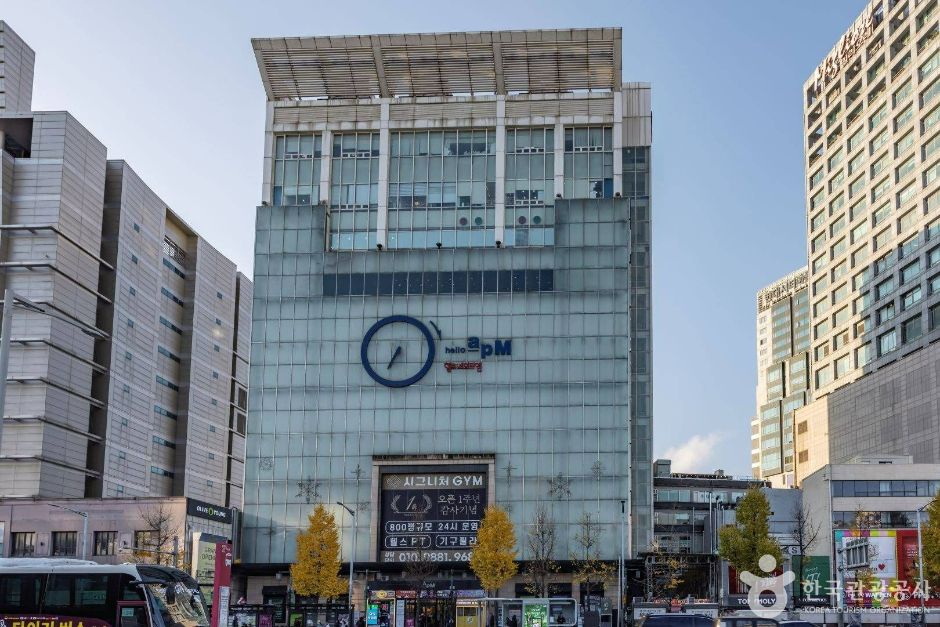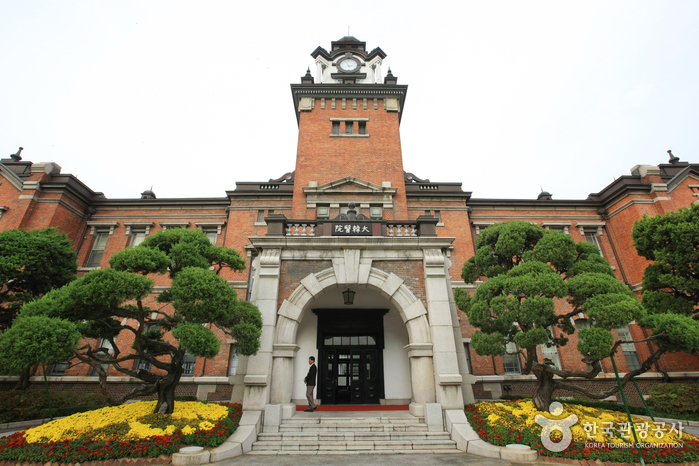Hema Studio (헤마스튜디오)
11.3Km 2023-06-22
20-10 Nonhyeon-dong, Gangnam-gu, Seoul
+82-70-7504-1415
Hema Studio is a place that provides experience services for K-pop lovers and is located in Gangnam, Seoul. Hema Studio offers products that allow foreign tourists to record their favorite K-pop songs and shoot personal music videos. You can go through the entire process from recording to cover music video shooting with a 1:1 director. After cover recording and music video shooting are complete, the completed work can be put on a USB and shared with friends and family. It is also possible to upload to SNS such as YouTube and TikTok. Hema Studio is located in the downtown area of Gangnam, so it is easily accessible via public transportation such as subway and bus.
Ikkirolkkaseu Garosugil(이끼롤까스 가로수길)
11.3Km 2021-04-17
35, Gangnam-daero, 156-gil, Gangnam-gu, Seoul
+82-2-514-3347
This is a house where you can enjoy special homemade pork cutlet. This Korean dishes restaurant is located in Gangnam-gu, Seoul. The representative menu is pork cutlet.
Motion - apM Branch [Tax Refund Shop] (모션 APM)
11.3Km 2024-04-23
4F, #155, to #157, 253, Jangchungdan-ro, Jung-gu, Seoul
-
The Ssanghwa Coffee (더쌍화coffee)
11.3Km 2023-11-03
252-3 Jong-ro, Jongno-gu, Seoul
The Sssanghwa Coffee, located near Dongdaemun Market, is a tea house serving traditional medicinal teas. In matching with their menu, the cafe is also decorated like a room found in a traditional Korean house. The cafe is comprised of three buildings, with the main building being for orders, and the Byeolgung and Ssanghwagung buildings offering seating. Each traditional tea order comes as a set with food items such as rice porriage, fruit, or rice cakes. The cafe also offers rooms which are very popular, so making a reservation is necessary.
Onitsuka Tiger - Garosu Branch [Tax Refund Shop] (오니츠카타이거 가로수)
11.3Km 2024-04-18
1F, 32, Apgujeong-ro 10-gil, Gangnam-gu, Seoul
-
Saemaeul Sikdang Dongdaemun (새마을식당 동대문)
11.3Km 2024-03-11
1FL, 30, Eulji-ro 43-gil, Jung-gu, Seoul
+82-2-2274-0410
Located near Dongdaemun and Dongdaemun Design Plaza (DDP), Saemaeul Sikdang specializes in traditional Korean grilled pork, including bulgogi, moksal (grilled pork shoulder), and grilled intestine. Especially for lunch, patrons have the option to delectable baekban (hand-made set menu), which is a traditional home-made Korean meal with steamed rice and grilled pork for side dish.
Myeong-dong Alssam Jjukkumi VS Budaejjigae(명동 알쌈쭈꾸미 VS 부대찌개)
11.3Km 2021-04-09
13, Jangchungdan-ro, 13-gil, Jung-gu, Seoul
+82-2-2275-9023
It is a place where you can enjoy grilled jjukumi (webfoot octopus) with egg wraps. The best menu at this restaurant is sausage stew. This Korean dishes restaurant is located in Jung-gu, Seoul.
Hello apM (헬로에이피엠)
11.3Km 2025-05-13
253 Jangchungdan-ro, Jung-gu, Seoul
+82-2-6388-1114
Hello apM is located within the Dongdaemun shopping district and appeals to customers in their 10s and 20s for it's latest trending styles and low prices. It is crowded year-round with young people from all over the world. Bargaining has faded out over recent years with prices more often indicated.
Le Labo - Garosu Branch [Tax Refund Shop] (르라보 가로수)
11.3Km 2024-04-18
1F, 28, Apgujeong-ro 10-gil, Gangnam-gu, Seoul
-
Seoul Daehan Hospital (서울 대한의원)
11.3Km 2021-12-23
101, Daehak-ro, Jongno-gu, Seoul
+82-2-2148-1842
Daehanuiwon (Daehan Medical Center) is an antique two-story brick building within the grounds of Seoul National University Hospital. It was established under the direct administration of the Uijeongbu (State Council), combining the Gwangjewon (under the Home Ministry), Gyeongseong Medical School and the Korean Red Cross Hospital (under the Royal Household).
Built in the Madubong Hill area, this location where Hamchunwon, the outer garden of Changgyeonggung Palace, once stood in 1484 (15th year of King Seongjong), was also once the site of Gyeongmogung Palace, where King Jeongjo enshrined the mortuary tablet of his birth father Crown Prince Sado Seja in 1776 (the year King Jeongjo ascended to the throne).
These places that held importance for the royal family were destroyed as the Japanese built Gyeongseong Empire University in its place. In 1907, with the announcement of the plan to establish Daehan Medical Center, construction began on the main building, seven wards and affiliated buildings. Construction was completed in November 1908.
The Daehan Medical Center opened in Gwangjewon, but upon Japanese colonization in 1910, its name was changed to the Japanese Viceroyalty Hospital. In 1926, it was included as a part of Gyeongseongjeguk University to become a university hospital. Since the liberation of Korea in 1945, it has been a hospital affiliated with Seoul National University.

![Motion - apM Branch [Tax Refund Shop] (모션 APM)](http://tong.visitkorea.or.kr/cms/resource/52/2889352_image2_1.jpg)

![Onitsuka Tiger - Garosu Branch [Tax Refund Shop] (오니츠카타이거 가로수)](http://tong.visitkorea.or.kr/cms/resource/60/2889060_image2_1.jpg)


![Le Labo - Garosu Branch [Tax Refund Shop] (르라보 가로수)](http://tong.visitkorea.or.kr/cms/resource/40/2879640_image2_1.jpg)

 English
English
 한국어
한국어 日本語
日本語 中文(简体)
中文(简体) Deutsch
Deutsch Français
Français Español
Español Русский
Русский